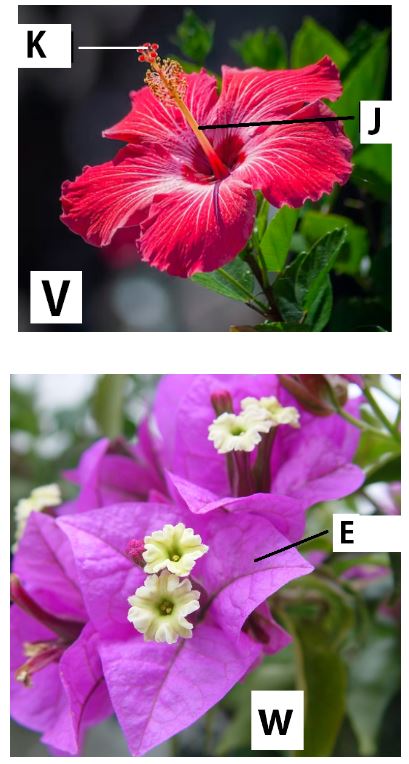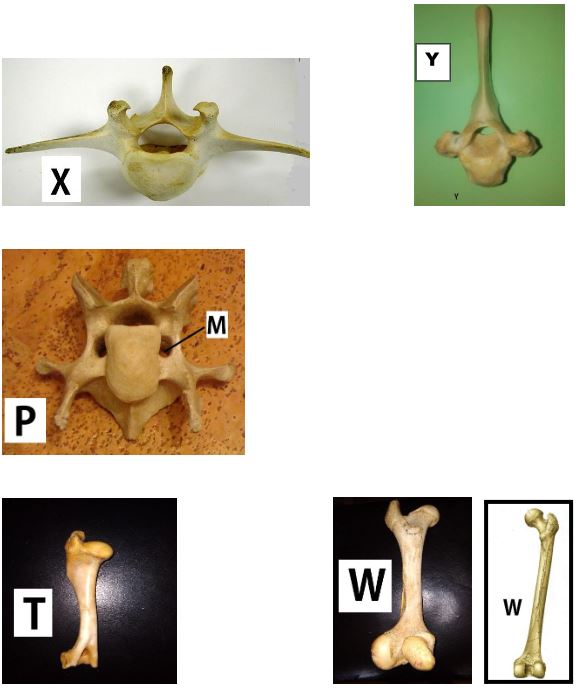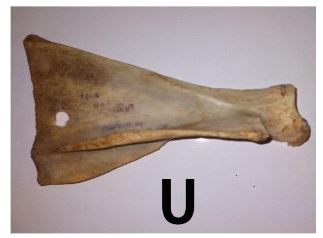INSTRUCTIONS TO CANDIDATES:
- Answer all the questions
- You are required to spend the first 15 minutes of the 1 ¾ hours allowed for this paper, reading the whole paper carefully before starting to do this paper.
- You are provided with two test-tubes. Label them as A and B. You are required to prepare the contents of test tube A and B as follows. To test tube A, add 2cm3 of solution R provided and test using the provided reagent. To test tube B, add 2cm3 of solution T provided and test using the provided reagent. (5 Marks)
-
Test tube Procedure Observation Conclusion A B - To the provided visking tubing tie one end with the provided string and add solution R. Tie the remaining end and immerse it in a solution of iodine solution in a beaker (50ml). After 5-10 minutes remove it from the beaker and observe.
- What was your observation of the contents of the visking tubing at the end of experiment? (1 Mark)
- Account for your results in (i) above. (4 Marks)
- Explain two roles of physiological process under investigation in (c) above in living organisms. (2 Marks)
- You are provided with specimen Q. Cut a longitudinal section specimen of specimen Q to make two parts. Add one drop of iodine solution on the surface of one of the exposed surfaces.
- State the observation (1 Mark)
- Explain the observations made in d(i) above. (3 Marks)
-
- The photographs below shows different types of flowers. Photograph V is a flower obtained from a Hibiscus plant while photograph W is a flower obtained from Bougainvillea plant.
- On the photograph, name the part labelled J and K (2 Mark)
-
- Name the agent of pollination for the flowers in the photograph (1 Mark)
- State three observations on the photographs that support the answer you have given in (b)(i) above (3 Marks)
-
- Name the class of plant from which the photograph V was taken (1 Mark)
- Using observable features on the photograph, give the three reasons for your answer in c (i) above (3 Marks)
- Name part labelled E on the photograph W (1 Marks)
- The photographs below were taken from specimens obtained from mammalian skeleton. Evaluate them and use them for answering questions.
- Identify the bone labelled X, Y, and T (3 Marks)
X
Y
T - State the function of part labelled M in bone P (1 Mark)
-
- Name the type of joint formed in the proximal end of bone T (1 Mark)
- State two characteristics of the joint named in c(i) above (2 Marks)
- On the image U, label two parts. (2 Marks)
- Discuss various adaptations of bone W to its functions (4 Marks)
- Identify the bone labelled X, Y, and T (3 Marks)
CONFIDENTIAL
INSTRUCTIONS TO SCHOOLS
Each student should be provided with the following:
Question 1
- 4 test tubes per rack
- Solution R – 1% starch solution
- Solution T – Distilled water
- Two labels
- 15 cm string (2 strings)
- 10 cm long visking tubing
- Iodine solution
- 50 ml beaker
- Specimen Q-Dry maize seed/fruit/grain.
- Scalpel
- Pair of forceps (or access to)
NOTE; ALL PHOTOGRAPHS IN PP1 AND PP3 MUST BE COLOURED
MARKING SCHEME
-
-
(5 Marks)Test tube Procedure Observation Conclusion A Put 2cm3 of R in a test tube and 2 drops of iodine solution/Put R in a test tube and add iodine solution; Blue-black; Starch present; B Put 2cm3of Rin a test tube and 2 drops of iodine solution/Put R in a test tube and add iodine solution Yellow/brown; Starch absent;
(In B only observation and conclusion attract 1 mark each). No marks for procedure but must be correct if the student is to earn marks for observation and conclusion -
- Liquid R/ Contents inside the visking tubing turns blue-black; (1 Mark)
- Iodine molecules are (relatively) small; they diffused; into the visking tubing reacting with R/the contents to give blue-black colouration; shows presence of starch in R; (4 Marks)
-
- Absorption/taking up of mineral salts by root hair from the soil solution into the plant;
- Absorption of digested food across the wall of the ileum into the blood stream;
- Carbon IV oxide and oxygen move by diffusion/this process across respiratory services in living organisms;
- Waste substances like nitrogenous waste are removed from organisms like unicellular organisms by diffusion;
(2 Marks) (Any 2 correct)
-
- Endosperm turns blue-black in colour/changes colour to blue black; (reject if endosperm is not mentioned) (1 Mark)
- Endosperm contains starch; that has been stored. Starch in the endosperm reacted/mixed with iodine solution to form a blue black substance; Embryo and scutellum do not contain starch; (3 Marks)
-
-
- J-Staminal tube; K- Stigma;(2 Mark) must be labelled on the photograph
-
- Insect; (accept when specific insect is named) reject-insect pollination (1 marks)
-
- Brightly coloured/conspicuous bracts/petals/sepals/flower;
- Landing stage/platform;
- Tabular Corolla/stamen (filament and anther) and pistil enclosed; (3 marks)
-
- Dicotyledonae; reject dicot/dicotyledon/wrong spelling/if D is small letter (1 Mark)
-
- Five petals/five petals/floral parts occur in 5’s;
- Broad lamina/leaf lamina;
- Network veins/venation/reticulate venation; (3 Marks)
- Bract; (1mk)
-
- X-Lumbar vertebra; Y-Thoracic vertebra; Z-Humerus; (3 Marks)
- Passage of vertebral artery; (1 Mark)
-
- Ball and socket joint; (1 Mark)
-
- Movement is possible in all directions/planes;
- Enable rotation through 360 degrees/rotate through 360 degrees; (2 Marks)
- Spine; Glenoid cavity; supra scapula; (2 Marks)
-
- Prominent head of femur fits into the acetabulum forming the hip joint; that enable movement
- Greater and lesser trochanter form large/long extension for attachment of thigh muscle
- Expanded and rounded knobs called condyles/ lateral and medial condyles that articulate with patella (knee cap) and tibia with a hinge joint;
- Hard/ossified shaft to support/bear the weight of the body;
- Long/large shaft to increase surface area for attachment of thigh muscle; (any correct 4) (4 Marks)
Download Biology Paper 3 Questions and Answers with Confidential - Lainaku II Joint Mock Examination 2023.
Tap Here to Download for 50/-
Get on WhatsApp for 50/-
Why download?
- ✔ To read offline at any time.
- ✔ To Print at your convenience
- ✔ Share Easily with Friends / Students



